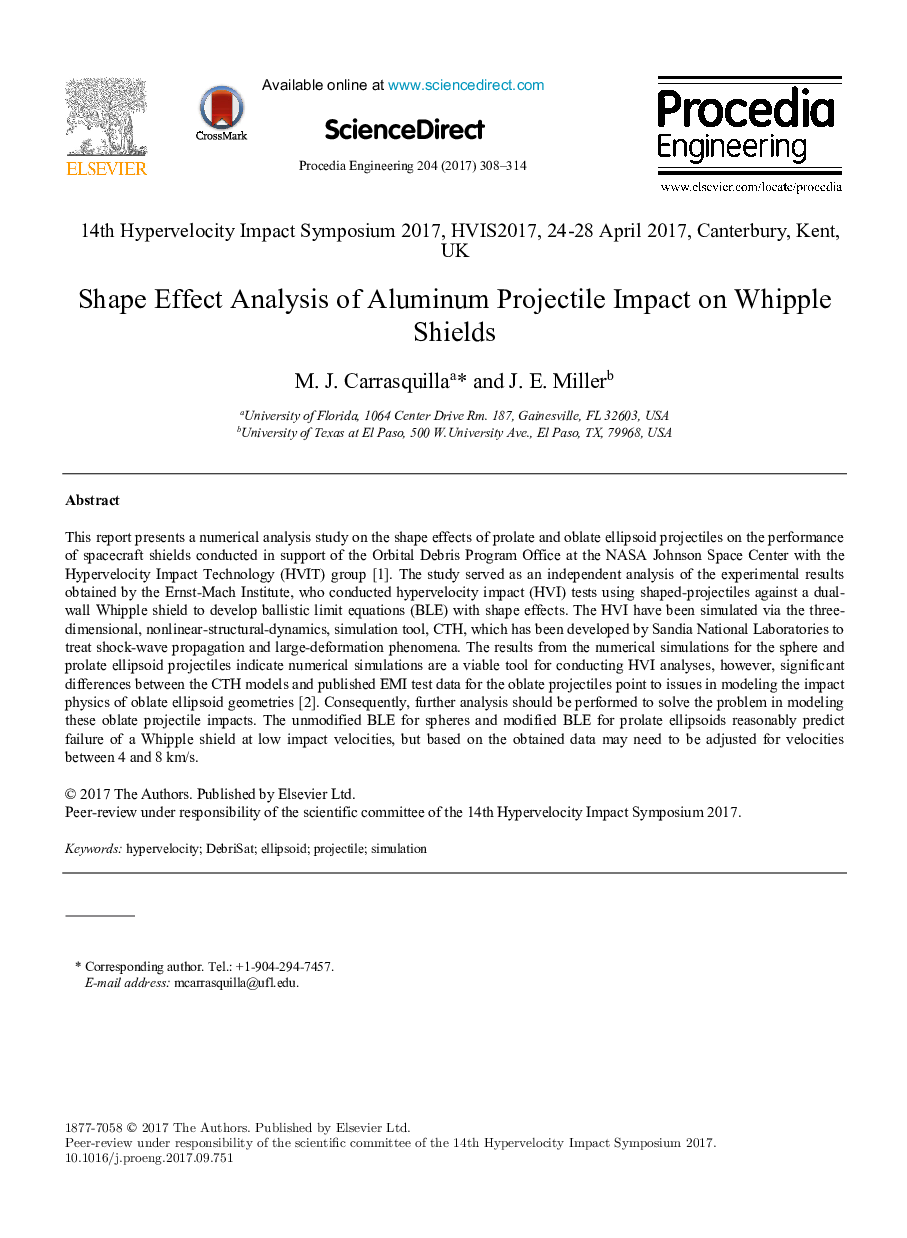| Article ID | Journal | Published Year | Pages | File Type |
|---|---|---|---|---|
| 7227958 | Procedia Engineering | 2017 | 7 Pages |
Abstract
This report presents a numerical analysis study on the shape effects of prolate and oblate ellipsoid projectiles on the performance of spacecraft shields conducted in support of the Orbital Debris Program Office at the NASA Johnson Space Center with the Hypervelocity Impact Technology (HVIT) group [1]. The study served as an independent analysis of the experimental results obtained by the Ernst-Mach Institute, who conducted hypervelocity impact (HVI) tests using shaped-projectiles against a dual-wall Whipple shield to develop ballistic limit equations (BLE) with shape effects. The HVI have been simulated via the three-dimensional, nonlinear-structural-dynamics, simulation tool, CTH, which has been developed by Sandia National Laboratories to treat shock-wave propagation and large-deformation phenomena. The results from the numerical simulations for the sphere and prolate ellipsoid projectiles indicate numerical simulations are a viable tool for conducting HVI analyses, however, significant differences between the CTH models and published EMI test data for the oblate projectiles point to issues in modeling the impact physics of oblate ellipsoid geometries [2]. Consequently, further analysis should be performed to solve the problem in modeling these oblate projectile impacts. The unmodified BLE for spheres and modified BLE for prolate ellipsoids reasonably predict failure of a Whipple shield at low impact velocities, but based on the obtained data may need to be adjusted for velocities between 4 and 8 km/s.
Related Topics
Physical Sciences and Engineering
Engineering
Engineering (General)
Authors
M.J. Carrasquilla, J.E. Miller,
